Author Archives:Liz Reed
Chicago: My Kind of Town
Frank Sinatra sang My Kind of Town in the 1964 Rat Pack film (Robin and the 7 Hoods), he was joined by the crowds on the street as he walked out of the court house a free man. Mobster Robbo (played by Sinatra) had been framed and he was a grateful man that day and he was cheered on by onlokers. The song was nominated for an Academy award, but it lost out that year to another joyous tune, Chim-Chim-Chere-ee from the 1964 musical Mary Poppins.
Yet, Sinatra’s song became a beloved one, particularly to proud Chicagoans, and most of us know it. “And each time I roam, Chicago is calling me home.”
The American Library Association is headquartered in Chicago and it makes perfect sense that every four or five years the association schedules its annual conference there.
And that’s perfectly fine with me.
Despite its reputation for violence, corruption, traffic, heat and humidity, I love traveling to Chicago when ALA is scheduled in June. The light stays long into the evening after the conference events have ended, the streets are highly walkable, the restaurants are all delicious, and Chicago is just my “kind of town.”
My last trip to Chicago in June, I treated myself to a 1-1/2 hour river cruise at sunset given by the Chicago Architectural Foundation. The city is particularly stunning from the water and the history of hundreds of elegant skyscrapers comes alive with the sun to the west and the darkening sky to the east. It’s simply breathtaking.
My favorite non-fiction book happens to be set in Chicago. The Devil in the White City by Erik Larson parallels the construction and events of the Columbian Exposition (or 1893 World’s Fair) with the true story of one of Chicago’s serial murderers. (There are many other true serial murders set in Chicago, including Richard Speck, John Wayne Gacy and the 1940s Lipstick Killer, William Heirens.) My next trip to Chicago will definitely include a 3-1/2 mile CAF bus tour of the landscape of both the World’s Fair and the footsteps of evil Dr. D.H.H. Holmes.
But enough about Chicago and its crime. Let’s move on to one of its tragedies – the Great Fire of 1871. If you visit Chicago today, you can wander many of the same streets and imagine yourself on the banks of either of the forks of the Chicago River where the fire both started and stopped. It began in Patrick and Catherine O’Leary’s barn on DeKoven Street, jumped the South Branch of the Chicago River to the east, traveled north and then jumped the main Chicago River and burned most of Chicago along the banks of Lake Michigan. Due to rain and diligence of firefighters, the fires stopped just east of the North Branch two days later, saving the west of more destruction.
By October 10, 1871, the Great Chicago Fire caused 300 people to die, thousands of buildings to burn to the ground, and millions of dollars in damages. Over one hundred thousand more residents were left homeless. The devastation ran four miles in length along the lake and a mile west to east where it simply stopped on the banks of Lake Michigan on the east and was helped by rain on the western edge of the North branch for over 3 square miles.
In 1870, Chicago was the second largest city in the United States. It had become one of the nation’s transportation and a manufacturing and warehouse centers (both Montgomery Ward and Sears Roebuck catalog retailers made Chicago their home). Chicago was growing at a fantastic rate and by 1860, it had gained in political influence, surpassing St. Louis and Cincinnati, the other two Midwestern cities of note. In 1860 the Republican National Convention was held in Chicago and the participants elected Illinois native Abraham Lincoln.
Immigrant populations and wealthy manufacturers and capitalists flocked to Chicago after it was incorporated as a city in 1837. By 1871, Chicago was a bustling city of 324,000. Gracing and expanding on the banks of Lake Michigan it grew much like Boston did – to the west of the marshy wetlands of the waterfront. The land often flooded and for this reason there were miles of wooden sidewalks and boardwalks. In fact, Chicago was built almost entirely of wood. Some ornamental decorations in its magnificent buildings were crafted from wood and made to look like stone or granite.
Although it had a very modern fire department, there were preconditions and fatal mistakes that Sunday night of October 8 that caused the fire to spread with abandon. The city was hot, crowded, dry and windy. Some didn’t take the fire seriously; there had been a fire the night before that destroyed four city blocks. When the fire was spotted from the taller buildings in the city center, it appeared to be smoldering flames from the previous fire. The correct locations were not given more than once and fire alarms weren’t pulled.
The myth of Mrs. O’Leary’s cow – the one that knocked over the lantern and started the Great Fire of Chicago – is well known. However, Catherine O’Leary, an Irish immigrant, denied the story – in fact, the O’Leary’s were already in bed when the flames started in their barn that evening. They needed to be up well before dawn to milk their cows. This 19th century urban legend that blamed the working class has been debunked over and over in literature in the 20th and 21st centuries.
One of my favorite books about the Chicago fire is Jim Murphy’s The Great Fire (Newbery and Horn Book award winner). It’s a young adult book that is illustrated with original photographs and Murphy’s own maps of the fire as it progressed. Murphy’s book contains many of the same photographs and similar maps in The Great Chicago Fire in Eyewitness Accounts edited by David Lowe, 1979.
There are several other great children’s books: What Was the Great Chicago Fire by Janet Pascal and I Survived The Great Chicago Fire, 1871 by Lauren Tarshis. Both contain stories of eyewitnesses to the fire.
By 1890 there were over 1 million people living in Chicago. A building boom like no other had rebuilt the city. Chicago hosted the Columbian Exposition only two decades after the fire’s devastation. After the Great Fire, Chicago rose from the ashes and was America’s Second City (second to New York in population) for over a century until Los Angeles gained the title.
In the words of Sinatra – Chicago is “my kind of town.” It’s a beautiful city worthy of its praise. Visit Chicago for yourself either in the travel guides available or the stories of the Great Fire.
Charlotte Canelli is the library director of the Morrill Memorial Library in Norwood, Massachusetts. Read Charlotte’s column in the July 13, 2017 edition of the Norwood Transcript and Bulletin.
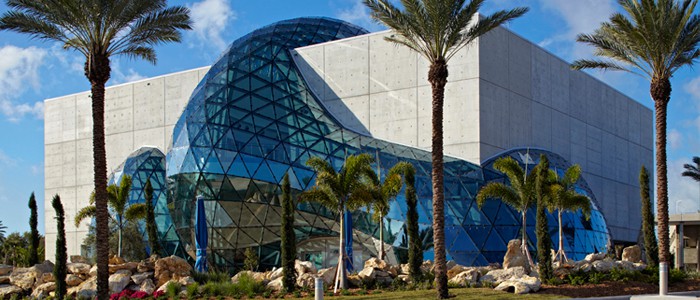
6
JulLobster Phones and Melting Clocks
 Imagine a Florida vacation: calm sandy beaches on the Gulf, fruity drinks, theme parks, exotic wildlife, and long evenings spent with friends might all come to mind. Many people don’t necessarily count museum visits among their top tropical vacation things-to-do, and far fewer would list lobster phones and melting clocks. On a recent trip to St. Petersburg Florida, though, I knew that one of the things I absolutely did not want to miss was the Salvador Dali Museum.
Imagine a Florida vacation: calm sandy beaches on the Gulf, fruity drinks, theme parks, exotic wildlife, and long evenings spent with friends might all come to mind. Many people don’t necessarily count museum visits among their top tropical vacation things-to-do, and far fewer would list lobster phones and melting clocks. On a recent trip to St. Petersburg Florida, though, I knew that one of the things I absolutely did not want to miss was the Salvador Dali Museum.
I first became fascinated with Dali’s art completely by chance when I was studying abroad in London. While walking along the River Thames I stumbled upon a travelling exhibit, The Dali Universe. What else can you do when you see larger-than-life spindle-legged elephants and melting clock sculptures set against a backdrop of classic London attractions? You just have to explore! In the Dali Universe gallery I discovered some of Dali’s most iconic, and also less well known, paintings, sculptures, furniture, and fashion, including Cabinet Anthropomorphique and Space Elephant. I was completely unprepared for what I encountered, but I was hooked. I knew that if I ever had another chance to see Dali’s work firsthand, I’d take it.
Cut to early summer 2017. The Salvador Dali Museum, known by locals as “The Dali,” stands on the waterfront in Old St. Petersburg. The museum’s collection is largely comprised of the extensive personal collection of Reynolds and Eleanor Morse. The Morses began collecting Dali’s work in the early 1940s, and even met and became good friends with Dali and his wife, Gala. Although The Dali’s collection includes works from all periods of Salvador Dali’s long and varied career, the collection is still weighted toward those bodies of work which the Morses most preferred: Dali’s early work which was heavily influenced by Impressionism and the pursuit of highly technical skill, certain surrealist subject matter, and his “nuclear mysticism,” which featured images of religious, historical, and scientific themes. Today, the museum houses the largest collection of Dali’s work outside of Europe.
The building itself embodies the spirit of Dali’s work by combining the rational with the fantastical. The original Dali Museum in St. Pete’s opened in 1982, and this new construction was completed in early 2011. The museum is a simple rectangle, out of which flows an eye-catching free-form geodesic bubble. This glass structure is known as the “enigma,” and though it looks fanciful, the enigma is actually made up of 1,062 pieces of triangular glass, each one cut to unique and specific dimensions; no two pieces are the same. The enigma isn’t the museum’s only mathematical marvel either. The middle of the airy building features a helical staircase reminiscent of the DNA spiral, something that appeared often in Dali’s work.
So, who was this international man of mystery, Salvador Dali? Dali was born in 1904 in Figueres, Spain. His talent was apparent at an early age, and he attended drawing school and studied art in university. He gained a high degree of technical skill, and as a young adult began to experiment with more modern and avant-garde forms of art, including Cubism and Dadaism. He is probably best known for his works as a Surrealist artist, however, with “The Persistence of Memory,” featuring the famous melting clocks, being his most well-known work. Later, Dali became fascinated with science, nature, and religion, incorporating elements of all three into his paintings. Several of the grandest of these works are housed at the Dali Museum and measure over 10 feet by 13 feet. Dali did not restrict himself to painting. He produced many works of art in sculpture, film, fashion, photography, and furniture.
Dali the man was every bit as grandiose and bizarre as his artwork. He was expelled from the inner circle of surrealist artists for his narcissism and pursuit of prominence, and was famously quoted as saying, “Each morning when I awake, I experience again a supreme pleasure – that of being Salvador Dali.” His pointy, long, flamboyant mustache is famous the world over, and his personal eccentricities sometimes overshadowed his artwork.
I’ve barely been able to scratch the surface of the Dali’s work and fascinating life. To learn more about the man and his art, check out these books from the Morrill Memorial Library: “The Secret Life of Salvador Dali” by Salvador Dali, “The Persistence of Memory: A biography of Dali” by Meredith Etherington-Smith, “The World of Salvador Dali” by Robert Descharnes, “Salvador Dali” by Jessica Hodge, and “This is Dali,” a partially graphic novel by Catherine Ingram and Andrew Rae. And if you’re ever in St. Pete’s, absolutely visit The Dali – you won’t be disappointed.
Liz Reed is an Adult and Information Services Librarian at the Morrill Memorial Library in Norwood, Massachusetts. Read Liz’s column in the July 6th edition of the Norwood Transcript and Bulletin.
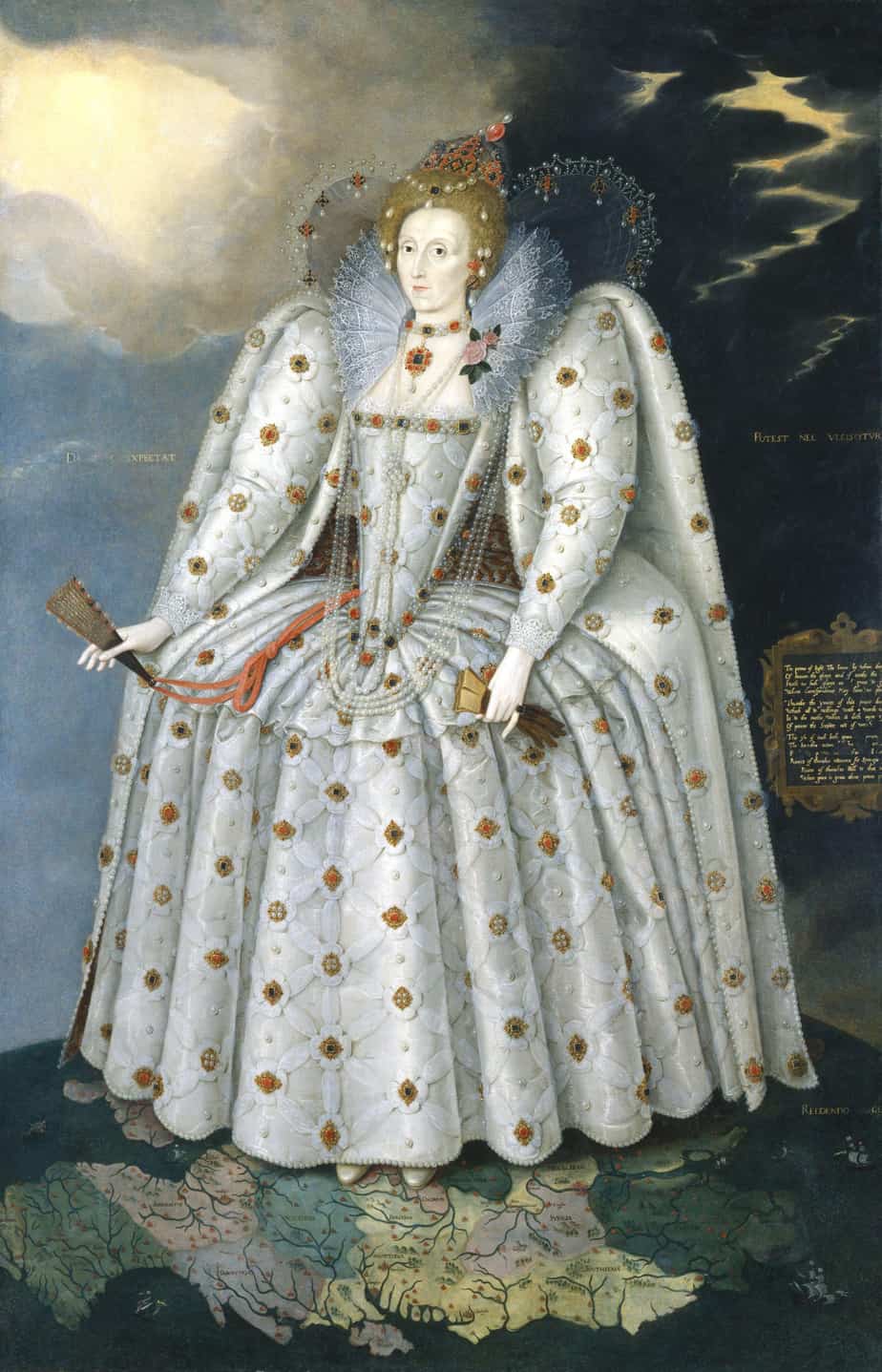
31
MarMake it Work
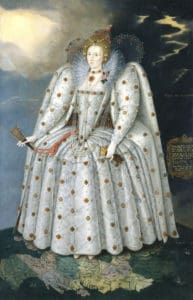 “Everything old is new again.” We’ve all heard variations of this famous line, usually applied to fashion. We’re supposed to change our wardrobes seasonally, and seasonal staples change from year to year. All fans of Project Runway know that the fashion world moves quickly; as Heidi Klum says, “In fashion, one day you’re in, the next day – you’re out.”
“Everything old is new again.” We’ve all heard variations of this famous line, usually applied to fashion. We’re supposed to change our wardrobes seasonally, and seasonal staples change from year to year. All fans of Project Runway know that the fashion world moves quickly; as Heidi Klum says, “In fashion, one day you’re in, the next day – you’re out.”
Well, yes. But, in all deference to Heidi, in fashion you may be out one day, but you’ll eventually be back in again. I’m not referring to ultra-hip vintage-hunter fashionistas, or to hipsters ironically wearing an old outfit dug out of their aunt’s attic. I’m taking a long view of fashion history, and believe me, everything comes around again. You never know when a fad from Renaissance Europe or ancient Egypt might pop up again.
Think I’m barmy? Let’s look at a few examples. Picture King Henry VIII of England. Are you imagining a full-body portrait of Henry striking an aggressive pose, hands on hips and glowering? Go ahead and do a Google image search for Henry VIII – almost every portrait of his looks like this. See those puffy upper sleeves, and slightly less puffy lower sleeves? And the shirt fabric covering his chest? You’ll probably notice lots of little bits of white fabric poking out of the shirt and sleeves. These white bits are a voluminous white undershirt sticking through slashes intentionally cut in the outer layer of clothing. In Tudor England, these artful slashes in one’s clothing were the height of fashion. Hmm, intentionally slashed clothing? The most expensive clothing in the kingdom coming pre-ripped? Sounds familiar – think 80s’ hair metal bands, or the jeans purchased by today’s teenagers. See parents, your teens are just emulating British royalty!
Speaking of the 80s: shoulder pads. We can trace this interesting moment in recent fashion history back to Renaissance Europe. While variations existed from country to country, the general silhouette for women was characterized by wide shoulders, an extremely narrow waist, and very broad hips. The look was achieved with architectural undergarments like the corset and the farthingale, which was an early precursor to the hoop skirt, or crinoline, of the Victorian 1800s. For a prime example of the silhouette achieved with a corset and farthingale, look up a painting of Queen Elizabeth I. The corsets of the era made a woman’s upper body look quite conical, almost like an inverted triangle. Queen Elizabeth’s shoulders are even further accentuated by big puffy sleeves, wider at the shoulder and narrower at the wrist. These were called leg-o-mutton sleeves, and I do not look forward to the day when they come back into vogue. Anyway, the accentuated shoulder look for women was popular again in the 1980s, though to a much less dramatic degree, vis a vis shoulder pads. If Lady Gaga has any influence on modern fashion, we may see a resurgence of the shoulder pad.
I, like many people, use a staple of ancient Egyptian fashion in my daily routine: eyeliner. Men and women alike used kohl to outline and enhance their eyes. In fact, many modern grooming routines can be traced back to ancient Egypt: shaving, moisturizing, pedicures, deodorant, and many varieties of makeup, just to name a few.
Tracking fashion fads through history tends to be easier for women’s fashion than men’s because, at least in Western cultures, men’s basic fashion hasn’t evolved much since Beau Brummell. I’m speaking of course, of suits. Men’s suits owe absolutely everything to this fashionable gentleman from the Regency Period. Streamlined fitted pants, linen shirt, trim waistcoat or suit jacket – minimal, simple, and a classic look that has defined business wear for about 200 years.
Tim Gunn knows what I’m talking about. For a fun, quirky, witty, and practical look at fashion history and its influences on your own closet and fashion choices, check out “Tim Gunn’s Fashion Bible: The Fascinating History of Everything in Your Closet.” We have a copy in the Norwood Library up in the fashion history section, which you can peruse by visiting the 391 call number section on the mezzanine level. For a slightly more academic perspective with great color photographs, try “The Complete History of Costume & Fashion” by Bronwyn Cosgrave. If you own more pairs of shoes than you can count off the top of your head, you need to flip through “Shoes, an Illustrated History,” by Rebecca Shawcross; the large color photos are amazing, and you won’t believe some of the historic shoes.
We define so much of our personal identities with our clothing and fashion, yet pretty much everything in fashion has already been done somewhere, sometime. There’s something comforting in the thought that even something as mundane as deciding what to wear today has indelible ties to the past and our predecessors. Remember, just be yourself – but you can also be Cleopatra, Twiggy, Madonna, and King Henry VIII at the same time. And they said I’d never use that Costume History class…
Liz Reed is an Adult Services and Information Librarian at the Morrill Memorial Library in Norwood, Massachusetts. Read Liz’s column in the March 30th issue of the Norwood Transcript and Bulletin.
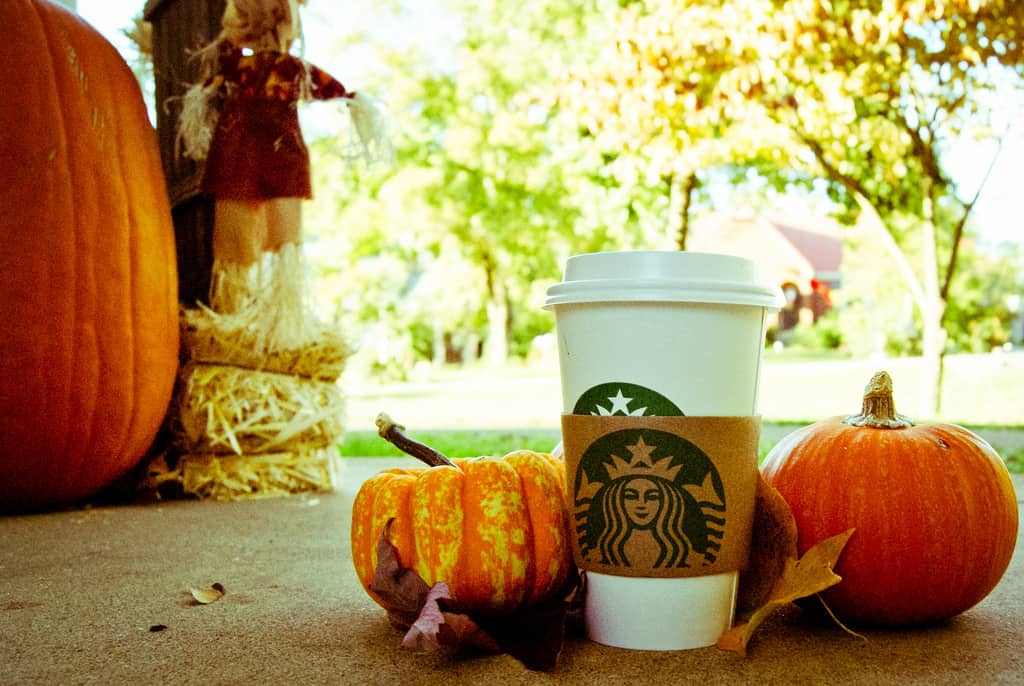
31
OctThe Spice of Life
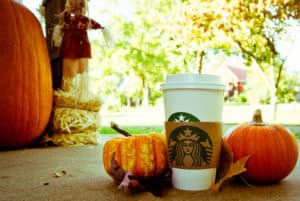 Well, it’s that time of year again. We’ve all seen the ads and we’ve all heard the commercials. Some of us can’t stop talking about the elephant in the room, some bemoan that it seems to creep earlier and earlier every cycle, and some just wish it were over. Whether you anticipate or dread it, none of us can deny that now, in late-October 2016, we are smack-dab in the middle of – pumpkin spice season.
Well, it’s that time of year again. We’ve all seen the ads and we’ve all heard the commercials. Some of us can’t stop talking about the elephant in the room, some bemoan that it seems to creep earlier and earlier every cycle, and some just wish it were over. Whether you anticipate or dread it, none of us can deny that now, in late-October 2016, we are smack-dab in the middle of – pumpkin spice season.
Yes, that’s right, pumpkin spice. Basically the best and most comforting flavor ever to grace a dessert table. Or latte. Or beer. Or candle, soap, you name it. I am unabashedly and firmly in the pro-pumpkin spice camp. Pumpkin spice has come to be a hallmark of Autumn in the United States, though I wouldn’t mind pumpkin spice being on the menu all year round. If you’re of the same mind, you should know that the Dedham Square Coffee House has Pumpkin Spice Latte’s on the menu all year, and they’re as fabulous in April as they are in October.
Some however, claim that the pumpkin spice phenomenon has gone too far. After all, pumpkin spice has spread far beyond the traditional Thanksgiving pumpkin pies of yore, and has infiltrated nearly every aspect of Fall in the US. You can find pumpkin spice lattes, chips, granola bars, tea, beer, muffins, cream cheese, and much more.
A strong argument can be made that Starbucks is chiefly responsibility for the current pumpkin spice explosion.. The coffeehouse giant developed the Pumpkin Spice Latte in 2004 to capitalize on the Fall season, having already had great success with seasonal winter beverages such as Peppermint Mocha and Eggnog Lattes. The recipe was an instant sensation, and more and more companies have been jumping on the pumpkin spice band wagon ever since. For further discussion and interesting tidbits about all things pumpkin spice, visit the Pumpkin Spice Blog hosted by the University of Oregon.
Pumpkin spice naysayers are also quick to point out that there’s not actually real pumpkin in pumpkin spice products, and that you’re really just tasting cinnamon and other spices. In fact the iconic Starbucks Pumpkin Spice Latte does now include a small amount of pureed pumpkin, though, and the ingredient labels for many other products do claim the inclusion of real pumpkin. Regardless, and I assume I speak for many pumpkin spice lovers, we don’t care. Cinnamon, allspice, cloves, and ginger are traditional pairings for pumpkin, as I maintain the name “pumpkin spice” clearly implies. We’re after the pumpkin pie flavor, and these products don’t disappoint.
Modern Americans are not alone: apparently, no one has ever enjoyed the flavor of plain unadulterated pumpkin. Even the earliest recorded recipes for pumpkin advise the addition of savory or sweet ingredients. According to the book “Vegetables: A Biography,” pumpkins and other squash were among the first crops cultivated by humans. Prized in some cultures for their seeds and in others for their flesh, squash have been an important part of the global diet for about as long as we’ve been preparing food.
Given the late harvest for pumpkins and the fact that they overwinter so well, they were an important staple in Colonial America. A 1672 recipe for stewed pumpkin, originally recorded by John Josselyn, is reprinted in the book, “Giving Thanks: Thanksgiving Recipes and History, from Pilgrims to Pumpkin Pie.” Pumpkin pie as we think of it today was probably not served at the first Thanksgiving feast however, since the ovens necessary for baking pie crusts were not available in the colonies at that time. According to the What’s Cooking America website, the first recorded “modern” pumpkin pie recipe appeared in a cookbook by famous French chef Francois Pierre la Varenne in 1651, “The True French Cook.”
We all have different tastes, and I don’t expect to make any converts with this brief article. However, pumpkins and their spices have always been part of our cultural diet, and our heritage. You could choose to see pumpkin spice as a symptom of aggressive marketing in a consumerist culture – or you could see it as a tasty act of patriotism.
Liz Reed is an Adult Services and Information Librarian. Find her column in the October 27th edition of the Norwood Transcript.
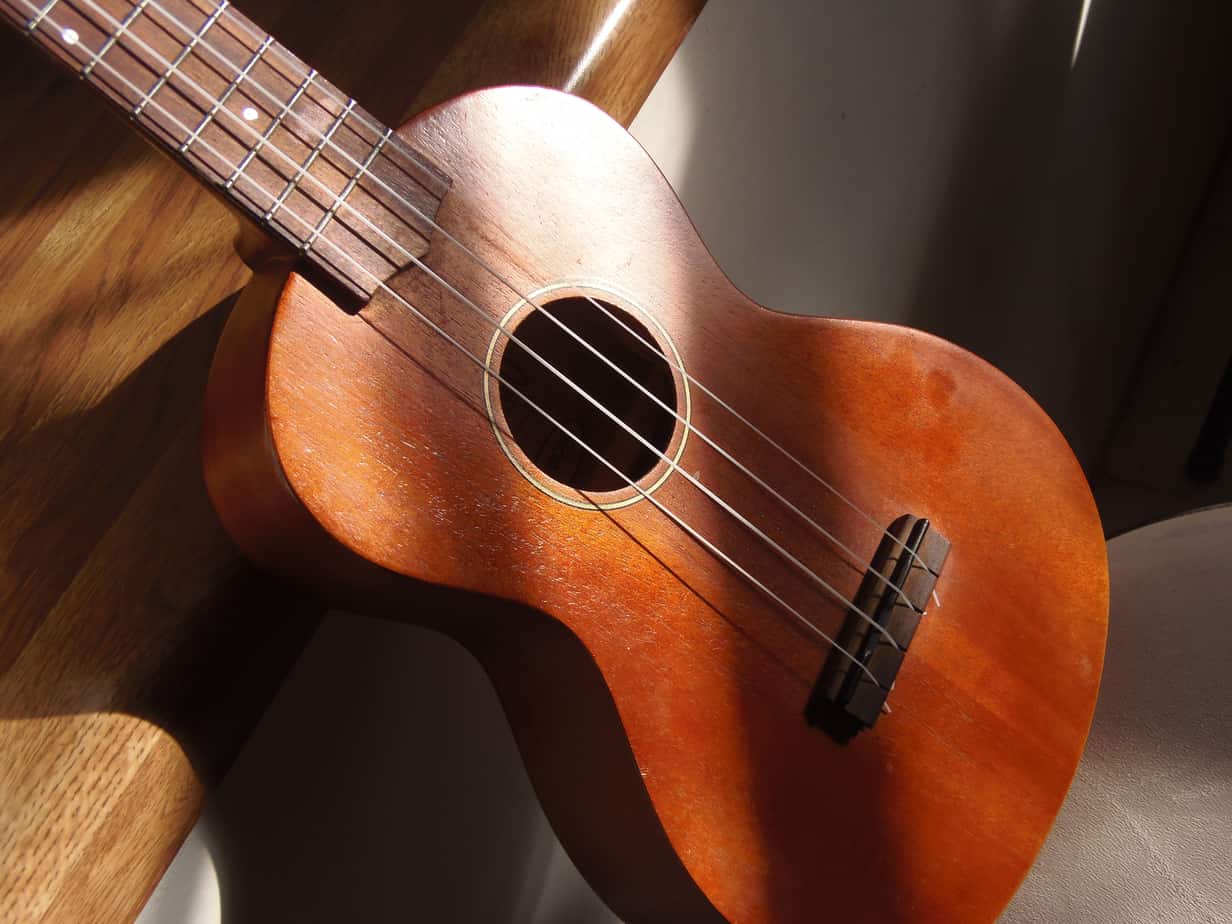
19
OctThe Library: Striking a Chord
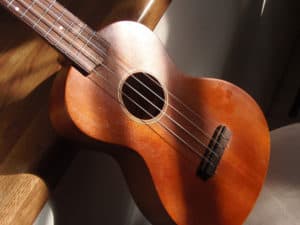 When I was child I spent so much time at the library it felt like a second home. As the years passed, other pursuits such as afterschool activities and part-time jobs began to monopolize the free time I had happily spent lost in books. During high school and college the library became relegated to a more utilitarian role – a place to study in peace or conduct research. After graduating, I found my way back to using the library for fun. Yet throughout my life and wherever I go the library has always been a resource I am aware of and a place I feel welcome. I was surprised to learn that this is not a universal experience. When a friend bemoaned that she was going broke buying DVDs for her young children, I asked why she didn’t just go to the library. She said she didn’t have the time or patience to hunt for them. My recommendation that she search the online catalog and simply place holds was a revelation. Yet in all the time I was singing the praises of the library, it never occurred to me to set my sights on becoming a librarian. Luckily, I finally had a revelation of my own and enrolled in Simmons’ School of Library and Information Science.
When I was child I spent so much time at the library it felt like a second home. As the years passed, other pursuits such as afterschool activities and part-time jobs began to monopolize the free time I had happily spent lost in books. During high school and college the library became relegated to a more utilitarian role – a place to study in peace or conduct research. After graduating, I found my way back to using the library for fun. Yet throughout my life and wherever I go the library has always been a resource I am aware of and a place I feel welcome. I was surprised to learn that this is not a universal experience. When a friend bemoaned that she was going broke buying DVDs for her young children, I asked why she didn’t just go to the library. She said she didn’t have the time or patience to hunt for them. My recommendation that she search the online catalog and simply place holds was a revelation. Yet in all the time I was singing the praises of the library, it never occurred to me to set my sights on becoming a librarian. Luckily, I finally had a revelation of my own and enrolled in Simmons’ School of Library and Information Science.
The library has gone through a metamorphosis since I was a kid. It is now a beautiful hybrid that encompasses the traditional books of my childhood together with a host of online resources and new technology. This suits me just fine. Although I’m as likely as anyone to use Google and other internet resources, I’m a tactile person who will always love the feel of a book in my hand. I also like the idea of going to the library, browsing, and finding something I didn’t know I needed. Online tutorials are great, but for me they work in conjunction with the books, DVDs, CDs, and magazines I can find at the library. I have used these materials to research vacations, brush up on my high school Spanish, acquire computer skills, try new recipes and learn about everything from improving my writing and making jewelry to the psychology of why we do what we do, and how we can do things better. Whenever I get the yen to try something new, I include the library in my search for information.
This year my husband, who usually gets me flowers for our anniversary, surprised me with a ukulele. I laughed when I recalled how we’d been watching a TV show weeks before, and one of the characters greeted his long-lost daughter at the airport strumming a ukulele and singing a modified version of the Who’s “Teenage Wasteland.” At the time, I’d waxed philosophic about the inimitable voice of the little instrument, and how fun it would be to just pick up said instrument and put my feelings to song. I admit that by the time we’d moved on to the next episode, I’d all but forgotten my desire to improvise little ditties about the day. Now, holding the tiny body in my hands and running my fingers over its diminutive strings I loved the idea of the ukulele even more, but wondered about actually getting a proper tune out of it. Yet the longer I held it, the more it was like that puppy at the pound that you spend too much time adoring; before long you know you’re done for. So it was settled: learning the ukulele was my latest yen.
Although I identify as a self-directed learner, this particular thing seemed a bit outside my grasp. So I did what any librarian-in-training would do, and went into research mode. First, I Googled “learn ukulele” which returned an avalanche of results. Who knew? Clicking on the first link, I discovered that the site’s creator, a musician and member of the Ukulele Orchestra of Great Britain (again, who knew?) had authored a book on the subject, so my next step was to search for it in the library’s online catalog. A library in the Minuteman Network owned a copy. I then searched the catalog for just “ukulele” which revealed an array of items from Ukulele for Dummies to Ukulele: A Visual History. I found CDs, DVDs, and even a ukulele kit. I also explored the Commonwealth Catalog – which allows patrons to search outside the Minuteman Network for items in libraries across Massachusetts. More resources greeted me there, including additional ukulele kits. While I’m no stranger to the interesting items one can borrow from the library – such as Morrill’s knitting needles, cake pans, microscopes, and even Wi-Fi hotspots – I was surprised by the ukulele kits out there. Curious to learn what might prompt a library to offer a ukulele, I decided to inquire. I called one of the libraries and found that a local music store had donated it. When asked if it was popular, I learned that it gets borrowed “occasionally.” Although that library hasn’t yet offered any related programs, they would consider it if patrons showed an interest. I find it encouraging that libraries in general are broadening their scope. Now we just have to spread the word and cultivate a wider audience.
I ended up placing holds on a couple books, a DVD, and a CD from my search, which I plan to supplement with online tutorials. My penultimate semester of library school might seem a strange time to pick up a new hobby, given the hectic schedule – but I actually think it makes sense. Whenever I need a short break from my studies, I pick up the uke and strum. Who knows? I may yet master my own improvised version of “Teenage Wasteland.” Perhaps I’ll even launch a ukulele program at a library, some day. It turns out we can tackle even the things that seem a bit beyond our reach. The library waits, now as ever, to provide the resources we need.
